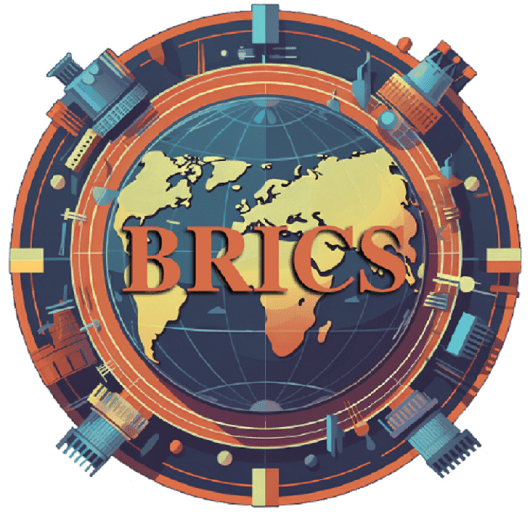If more countries join BRICS at its next summit in Johannesburg it could set the stage for a more equitable and democratic world order.
The next BRICS Summit, to take place in Johannesburg, South Africa, from Aug 22 to 24, is expected to mark a major step forward in its development and global impact.
The group was established in 2010 by four countries, Brazil, Russia, India and China, which were important economic and political powers in regional integration groups. South Africa was added in 2011.
The establishment of BRICS alongside a number of other important new international institutions in the new millennium and especially after the North Atlantic financial crisis of 2007-09 was a reflection of the reluctance of Western powers to increase the role of emerging powers in the architecture of global governance, including the Bretton Woods institutions and the World Trade Organization, the need to compensate for the lack of momentum and the unjust conditionalities of existing multilateral institutions and the need to give an impetus to South-South economic integration and better serve the needs of the Global South.
Until recently, BRICS had maintained a relatively low profile on the world stage. It was conceived as a dialogue and cooperation platform for a group of large emerging economies with shared values in relation to the international system (mutual respect and understanding, equality, solidarity, openness, inclusiveness and consensus).
A very important development that took place in 2014 was the establishment of the New Development Bank to mobilize resources for infrastructure and sustainable development projects in BRICS and other emerging and developing countries. Diplomatically, it was said to “supplement” what was, in fact, insufficient provision of patient international development finance by existing multilateral and regional financial institutions and global capital markets.
Another was the establishment of a Contingent Reserve Arrangement to address balance-of-payment difficulties and short-term liquidity problems in a world of volatile liberalized finance and the quantitative easing of developed countries’ central banks. In 2015, the BRICS announced engagement with the Eurasian Economic Union and the Shanghai Cooperation Organization. In 2016, its efforts contributed to the implementation of the International Monetary Fund quota reform, and in 2017, it started to consider dialogue and cooperation with non-BRICS and potential BRICS plus countries so as to make BRICS “the most influential platform for South-South cooperation in the world”.
By 2023, the BRICS had quietly made progress in areas such as trade, investment and sustainable development, infrastructure connectivity including additional and alternative trade and transport routes, financial integration, science, technology and innovation (digital economy, space exploration, and vaccine development) among many others.
In 2022, the combined economic output of the five BRICS members, measured in purchasing power parity, exceeded for the first time that of the US-led G7. At market exchange rates in 2021, the BRICS accounted for 26.1 percent of global GDP and 53.1 percent of world population, compared with 43.5 percent and 9.8 percent for the G7. However, GDP is misleading. If one examines the production of manufactures, energy and raw materials and food, the BRICS countries account for 36.6 percent, 28.3 percent and 53.1 percent of world output, respectively (compared with 35.5 percent, 28.1 percent and 14.1 percent in the case of the G7). This contribution to the production of real goods vital for human survival significantly exceeds the BRICS’ share of GDP(without correcting for purchasing power differences which significantly raise its shares) while those of the G7 are much smaller than its GDP share.

If other large countries in the Global South, including Iran, Indonesia and Saudi Arabia, are admitted (more than 40 countries have expressed an interest in joining) to the group at the upcoming South African summit, its economic and demographic significance will increase dramatically and reinforce a reorientation of trade and investment and the integration of producers from “BRICS Plus” economies into regional and global value chains that are already under way.
The summit is also important, however, because of the evident need to reduce dependence on a US dollar-centered international financial system for at least three reasons: the exploitation of international seigniorage and the “exorbitant privilege” of printing dollars, the instability deriving from the accumulation of an unsustainable mountain of debt and the use of the dollar and international financial architecture unilaterally to sanction countries. Today, though steadily declining, most trading is still denominated in dollars and has to transit through a US bank and the SWIFT system.
The BRICS members have already underscored the importance of encouraging the use of local currencies in financial transactions between BRICS countries and their trading partners. A common payment card system may complement (but not replace) existing national payment card systems. Connections may be established between Chinese, Indian and Russian financial messaging systems to operate alongside the Western controlled SWIFT system. And the BRICS in conjunction with the EAEU has started to explore the possibility of creating a parallel regional and possibly global reserve currency based on a basket of commodities and BRICS currencies. If established, it will permit the issuing of bonds to finance development projects.
The recent progress of the BRICS contrasts sharply with the difficulties the collective West has encountered in its attempts to strangle Russia economically and politically and contain China. More broadly it may signify the coming to end of an era lasting more than 500 years in which Western nations have dominated world affairs and the emergence of a new multipolar world characterized by more equitable and democratic rules and a stronger quest to seek collective solutions to global problems.
Source: China Daily Global, 2023-08-07. https://www.chinadaily.com.cn/a/202308/07/WS64d02bcea31035260b81a92e.html

Author: Michael Dunford, is emeritus professor of the University of Sussex, School of Global Studies, and a visiting professor at the Institute of Geographical Sciences and Natural Resources Research at the Chinese Academy of Sciences.

